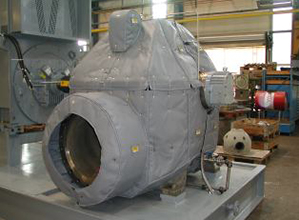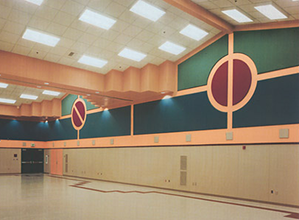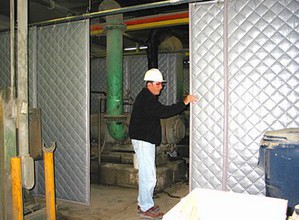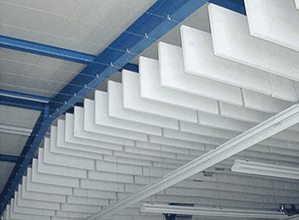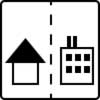Choosing the Right Soundproofing for your Facility
Not all soundproofing options are created equal, but choosing the right soundproofing is important. While all soundproofing solutions create an auditory barrier between the source of sound and the receiver, several factors should be considered to arrive at the optimal solution for noise control in your facility. Below is a brief overview of those factors.
Material
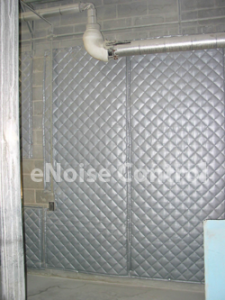 Soundproofing materials fall into 4 categories: absorption, transmission loss materials, vibration isolation, and dampening. The first two are used for airborne sounds while the last two are used for solid-borne sounds.
Soundproofing materials fall into 4 categories: absorption, transmission loss materials, vibration isolation, and dampening. The first two are used for airborne sounds while the last two are used for solid-borne sounds.
Absorbers, in particular, need to be lightweight, fibrous, and porous. Materials that fit this description include glass fibers, foamed elastomers, and acoustical ceiling tiles. These can be used as linings for walls, ceilings, mufflers, and enclosures.
However, absorbers are not suitable as full-blown barriers or walls due to their limited ability to control the transmission of sound. Transmission loss materials are better for this purpose, although the proper application of these requires assistance from specialists.
Environmental Factors
Some soundproofing options are more suited for certain environments than others. For example, a dust-heavy construction site will require a different soundproofing material than a professional private office. Before selecting a soundproofing option, evaluate the following details in your facility:
- Levels of moisture or water immersion
- Amount of dirt, oil, and grease
- Level of vibrations
- Temperature
- Probability of erosion due to fluid flow
Regulatory Factors
Some municipalities and districts place regulations on soundproofing materials. Below are a few regulations you should consider for your application. Before installing any sound control, consult with an expert familiar with the regulations in your area.
- Flamespread rate limits on sound absorbent materials
- Fire endurance limits on sound absorbent materials
- Firebreak requirements on areas such as shafts, ducts, and pipe runs
- Requirements for materials to avoid damage by disinfection
- Restrictions on how much of the sound absorbent material can come into contact with processed food
- What kind of materials are allowed or forbidden in your type of facility
- Restrictions on the amount of airborne fibers shed by sound absorbent materials
Location
The right soundproofing also depends on the space to be soundproofed. Does the sound come from within the space or outside of it?
If the sound comes from within, the soundproofing system must work to contain the noise. If the sound is from outside, the sound mitigation must prevent it from traveling through walls, ceilings, floors, and other physical barriers.
Degree of Sound and Noise Control
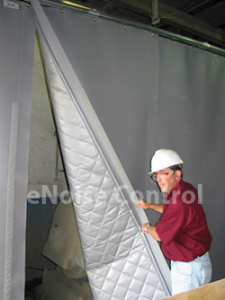 The last factor is determining the desired level of noise after the soundproofing system is installed. Do you want the noise to be reduced, contained, or eliminated altogether? Which option works best given your desired result? Will the soundproofing be temporary or permanent?
The last factor is determining the desired level of noise after the soundproofing system is installed. Do you want the noise to be reduced, contained, or eliminated altogether? Which option works best given your desired result? Will the soundproofing be temporary or permanent?
There are a number of important factors to consider when choosing soundproofing for your facility. It can be challenging to determine which ones are best for you, but by starting with this list, you will be headed in the right direction.
To learn more about noise control options or if you have a current noise pollution concern, contact us for more information. Our experienced consultants can help you design an effective noise mitigation system. Our consultants can also come on-site if you need sound level readings or more in-depth assistance.
